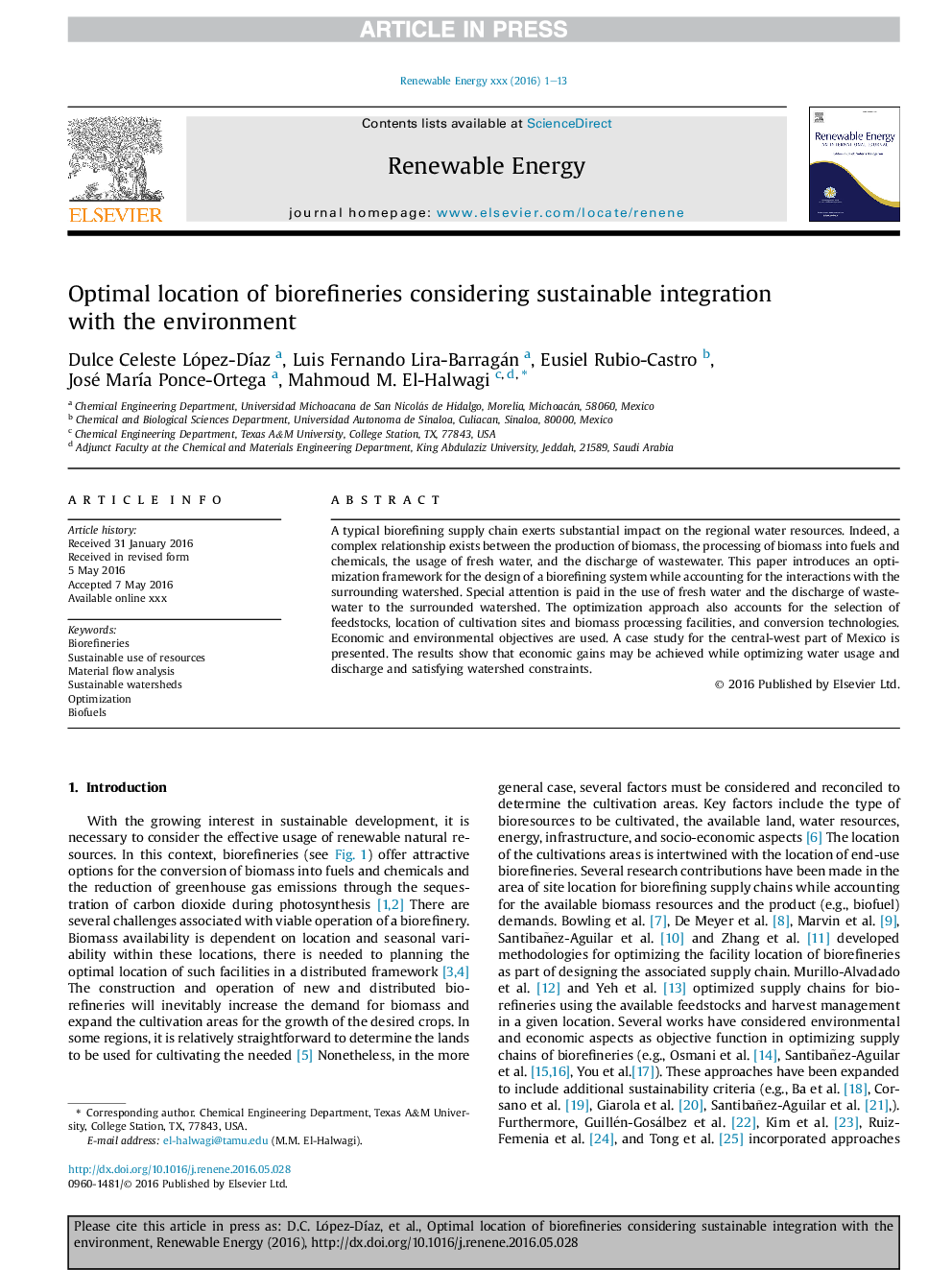| Article ID | Journal | Published Year | Pages | File Type |
|---|---|---|---|---|
| 4926756 | Renewable Energy | 2017 | 13 Pages |
Abstract
A typical biorefining supply chain exerts substantial impact on the regional water resources. Indeed, a complex relationship exists between the production of biomass, the processing of biomass into fuels and chemicals, the usage of fresh water, and the discharge of wastewater. This paper introduces an optimization framework for the design of a biorefining system while accounting for the interactions with the surrounding watershed. Special attention is paid in the use of fresh water and the discharge of wastewater to the surrounded watershed. The optimization approach also accounts for the selection of feedstocks, location of cultivation sites and biomass processing facilities, and conversion technologies. Economic and environmental objectives are used. A case study for the central-west part of Mexico is presented. The results show that economic gains may be achieved while optimizing water usage and discharge and satisfying watershed constraints.
Related Topics
Physical Sciences and Engineering
Energy
Renewable Energy, Sustainability and the Environment
Authors
Dulce Celeste López-DÃaz, Luis Fernando Lira-Barragán, Eusiel Rubio-Castro, José MarÃa Ponce-Ortega, Mahmoud M. El-Halwagi,
